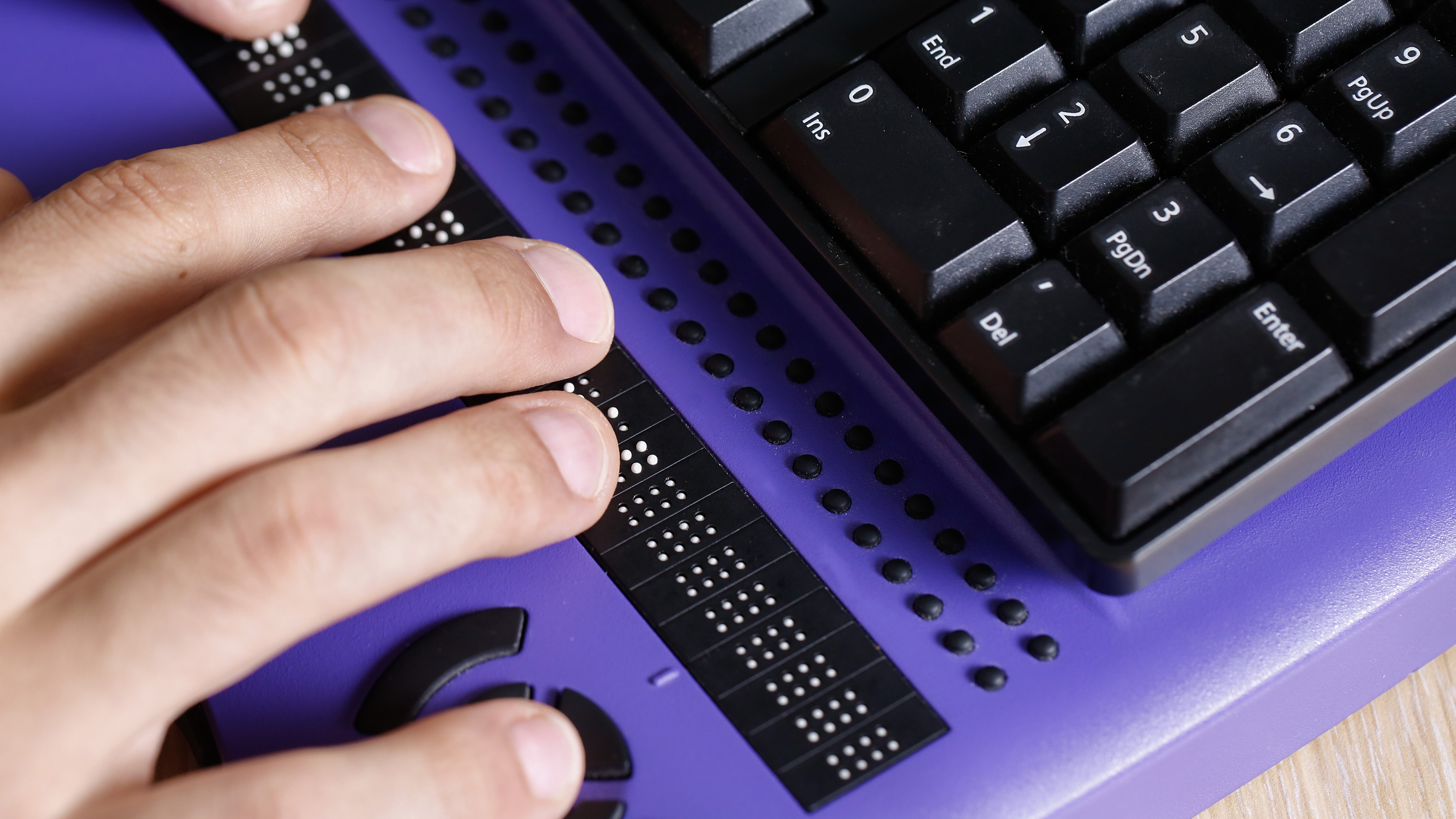Disabled IT professionals are building access for themselves
For visually impaired developers, the tools just aren’t good enough – so they’re taking matters into their own hands


Artur Ortega has seen many development tools come and go during his almost 30 years in the IT industry. He’s a visually-impaired software architect who’s previously worked for companies including the Telegraph and Yahoo. Now head of platform architecture for Babylon Health, Ortega says what drew him to the field was his connection to technology before becoming blind at 17.
“At the time, computers were, for me, the only real option for accessible access to information to books and so on,” he says. “Those were the early times of text-to-speech, and so, for me, it was a natural avenue for my profession.”
Ortega went on to study for a master’s degree in computer science. He says those early days, though, were marked by the same cycle he sees now when it comes to accessibility: two steps forward, one step back. First came simple text editors – easy for a screen reader, a tool that allows a blind user to have what’s on-screen read back to them, to manage – then integrated development environments (IDEs) came to pass, the majority of which weren’t accessible.
With tools like Microsoft Visual Studio, too, came other issues, namely, browsers used to input code not being accessible themselves. Ortega says part of the reason these cycles repeat is because of the lack of visibly disabled IT professionals in the industry. “We're having these similar cycles where developers, because the tools probably weren't that useable, never knew other developers who were disabled.”

Artur Ortega (pictured) says the industry needs more visibly disabled IT professionals
You can go your own way
One of Ortega’s industry colleagues is Saqib Shaikh, a visually impaired Seattle-based engineer at Microsoft. He says, in his personal opinion, while the industry has moved forward when it comes to accessibility in the last 20 years, there’s still a fair way to go. “There have been great people across the industry working on accessibility and educating people,” he tells IT Pro, “yet, I still hear from people who are blocked from a job because applications they need to use aren’t accessible.”
Ortega agrees, saying it goes beyond the tools that are used to build programmes, and into the very workflow of a software developer. From ticketing systems to architecture and diagram boards, Ortega points to specific tools like Atlassian Jira and Confluence where he says “retrofitted accessibility” leaves the usability of the products lacking.
Sign up today and you will receive a free copy of our Future Focus 2025 report - the leading guidance on AI, cybersecurity and other IT challenges as per 700+ senior executives
RELATED RESOURCE

Flexible IT models drive efficiency and innovation
A modern approach to infrastructure management
One Shaikh created himself is Seeing AI, which has gone on to be part of Microsoft’s offerings. Launched in 2017 for English users, and recently updated to include five other languages, the app was conceived at a company hackathon. That’s fitting, Shaikh explains, given his approach to life as a blind person is similar to a hacker; he solves personal accessibility problems as they appear.
“That was the moment when I thought, “you know, my being blind is part of who I am; being into emerging technologies is what I'm excited about”. You bring these two things together, and there was this natural intersection of, “how do we use artificial intelligence (AI) to help people who are blind?”.”
Branded as a “talking camera for the blind”, Seeing AI has multiple channels to support a user in completing tasks like reading short pieces of text, using a bar scanner to identify products, describe people’s faces, and correctly identify currency. There are also previewed channels, which allow users to identify a colour in their space, or facts about their current environment.
“I wanted to blend in”
As for how Ortega works around accessibility roadblocks within his day-to-day workflow, he uses tools like the NVDA screen reader alongside the speech synthesiser Eloquence, which allows him to listen back very quickly. This combination also plays back every element of the code he’s working on, so he doesn’t have to worry that his tools will try to make a coherent sentence out of his technical work.
Despite the myriad of tools at their disposal, however, both Ortega and Sheikh return repeatedly to the need for more disabled people in the industry. US Department of Labor figures show the unemployment rate for people with disabilities is roughly twice that of people without. People with disabilities across all levels of education, too, were much less likely to be employed than their counterparts with no disability. In addition, for those within the IT industry, 37% feel uncomfortable disclosing their disability at work due to fears of discrimination, according to National Cyber Security Centre (NCSC) and KPMG research.
When asked about previous mentors, Sheikh says while identifying with a disability is “very personal”, his goal was to not draw attention to himself. At the beginning of his career, for instance, he chose to reveal his blindness at the latter stages of any job application process.
“I guess it’s just my nature,” he explains. “I just wanted to be part of them. I wanted to blend in.” Now, though, he hopes employers understand disabled people have a set of skills that’s of incredible value to the IT Industry.
“Someone who lives day in day out with a disability is probably an expert at their own situation and has probably got a toolbox of workarounds that you can't even imagine.”
For Ortega, the message is similar. The more disabled people you hire, he explains, the more likely your products are to be accessible, and the more the cycle can develop positively.
“Just going into the office and other engineers seeing you have a disability means they reflect on the software they're creating. I had a situation where I've come into the office and other engineers that I didn't know were approaching me and apologising for the inaccessible software they'd developed.”
His reply – with a laugh attached: “I agree – you have the chance to change it as well. Now.”

John Loeppky is a British-Canadian disabled freelance writer based in Regina, Saskatchewan. He has more than a decade of experience as a professional writer with a focus on societal and cultural impact, particularly when it comes to inclusion in its various forms.
In addition to his work for ITPro, he regularly works with outlets such as CBC, Healthline, VeryWell, Defector, and a host of others. He also serves as a member of the National Center on Disability and Journalism's advisory board. John's goal in life is to have an entertaining obituary to read.
-
 Welsh startups 'increasingly isolated' over lack of diverse funding routes
Welsh startups 'increasingly isolated' over lack of diverse funding routesNews Founders say Wales' chance to be one of the UK's leading tech ecosystems is being undermined by a lack of investment
-
 What is WCAG and how do these guidelines power accessibility online?
What is WCAG and how do these guidelines power accessibility online?In-depth Experts urge a mentality shift, away from box-ticking compliance, to one that incorporates ease of use into the very fabric of web design
-
 UK gov opens £12m innovation fund to tackle cost of living crisis, regional inequality
UK gov opens £12m innovation fund to tackle cost of living crisis, regional inequalityNews Funding will enable regulators and local authorities to test and experiment with "bold and ambitious" approaches to the pressing issues of the day
-
 Diversity in tech is a well-trodden path, but change is painfully slow
Diversity in tech is a well-trodden path, but change is painfully slowOpinion IT leaders have a big role to play in changing attitudes to diversity and inclusion, but not all of them step up to the challenge
-
 Two in three IT employers struggle to recruit staff with adequate digital skills
Two in three IT employers struggle to recruit staff with adequate digital skillsNews Three quarters (77%) of surveyed senior UK IT decision-makers claimed that they are currently facing a digital skills gap in their organisation
-
 Primary schools to receive BBC micro:bits in digital literacy push
Primary schools to receive BBC micro:bits in digital literacy pushNews The initiative comes amid an "all-time high" shortage of talent in cyber security, big data analytics and technical architects
-
 Lenovo to give £1 from every laptop sale to UK digital poverty charities
Lenovo to give £1 from every laptop sale to UK digital poverty charitiesNews Tech giant to support local authorities and charities with hardware and expertise
-
 Australia allocates $6.7 million to advance women in STEM initiatives
Australia allocates $6.7 million to advance women in STEM initiativesNews Women make up only 28% of the country's STEM workers

